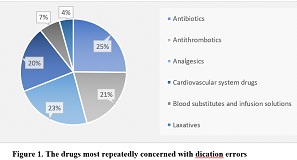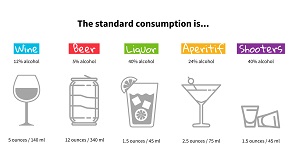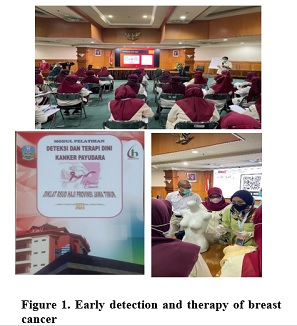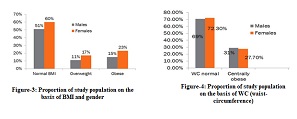Contributory Factors to the Inability of the Poor to Access National Health Protection: A Case Study in Waingapu, Sumba Timur District, Indonesia

Millions of poor Indonesians still need access to Indonesia's National Health Protection (NHP). The study investigated barriers making NHP inaccessible for the poor in Waingapu, Sumba Timur, Indonesia. We used a qualitative approach to identify the contributing factors to why NHP was inaccessible for some populations. A total of 30 residents of Waingapu who attended healthcare in two hospitals and five Community Health Centers were recruited using convenience technic. Twenty residents participated in the semi-structured interview, while ten engaged in casual conversations. We also interviewed three heads of community groups and three health cadres for comparative information. Questions have been developed to guide the interviews and casual conversation. The interviews were audio-taped and transcribed while intensive note-taking was performed during the informal discussion or the conversation was narrated immediately after the talks ended. The information was inductive, analyzed, and coded to produce common information among the participants. The data analysis revealed the factors that contributed to the failure of the resident to enroll in the NHP, such as lack of information about the registration, poor socialization of the program, the ignorance of village officers, unaffordability, and confusion about the parties responsible for the registration. The study concluded that poor people were still vulnerable to access free coverage and healthcare from the NHP. The stakeholders of the NHP, especially the local management of NHP and local government, need to urgently and effectively educate the commoners about the mechanism, benefits, and contribution to the NHP to ensure equity and equality in accessing quality healthcare.
1. INTRODUCTION
The World Health Organization (WHO) campaigns for implementing Universal Health Coverage (UHC). The UHC aims to ensure the access of the whole population of a country to the full range of essential and quality healthcare needed and avoid financial catastrophe when seeking medication11. UHC is the answer for people in Low-Income Countries (LICs) and Lower-Middle Developing Countries (LMICs) to access affordable and quality healthcare. The governments must provide free health protection and improve access to quality, equality, and equity healthcare22. Poverty is strongly associated with poor health, and medical costs draw the poor deeply to poverty3–63456. Therefore, governments are responsible for reducing the gap betwee
n the poor and well-off populations in accessing quality health care.
In the Indonesian context, the progress of UHC is significant77, especially when the NHP of Indonesia was officially introduced in 2014 as a measure to achieve UHC88. The NHP is a substantial achievement of Indonesia in protecting the population99, especially the low-income population. Currently, the BPJS-Kesehatan (the organizing management of NHP) claims that 247.7 out of 276 million people have been enrolled as members, and 151.7 out of 247.7 million are Non-Contributory Health Insurance (NCHI) subsidized by the government1010. The government pays for the monthly plan of the NCHI, while the rest of the population, the Contributory Health Insurance (CHI) population, is fully paid or partly subsidized by their employers.
Indonesia's poor and low-income groups reach 26.2 million (9.5%) of the country's total population1111. The coverage of NCHI in NHP is 5.8, which is five times bigger than the country's poor population. The figures reflect that all poor people have yet to enroll in the NCHI scheme and have access to healthcare. However, the extent to which the poor are fully registered in NCHI needs to be clarified. Validation of the poor is weak, making this population vulnerable to being cast away from the scheme. For example, the waste pickers in Surabaya, as the representation of the urban poor group counted as 20%, were left behind from the NCHI membership1212. The Ministry of Human Research, Development, and Culture reports that 10.8 million impoverished people need access to the NCHI scheme1314. Furthermore, 28.3% of the urban poor are not covered by NHP1414.
The remaining question is why and what factors hinder people, especially poor groups, from accessing government health protection membership. The poor cannot access health protection due to the plan's cost, and free health protection does not reach the poor15,161516. In the case of Indonesia, this study attempted to identify the contributing factors that make millions of people fail to enroll in the NHP. We chose Waingapu, the District of Sumba Timur, Nusa Tenggara Timur Province, as the research site based on some considerations, such as being classified as a poor district, limited access to social welfare benefits, and being geographically far from the center of government. The percentage of the poor population in the district was 31% from 252,704 people in 20171717The NCHI paid through the Sumba Timur District's annual budgeting plan reached 44,429 people or 17.6% of the district's population1818. The statistics reflected the vulnerability of poor people in the district to access the NHP program.
Besides the district's financial capacity to enroll its residents in NHP, we argued that there must have been underlying factors that contributed to the inability of thousands of poor people in the district to access the social health plan. This study, therefore, investigated the factors that contributed to the failure of the poor residents of Sumba Timur to enroll in the NHP scheme. The study is vital for all stakeholders in the district to mitigate the factors and take necessary actions to improve the coverage of NHP for the poor in need.
2. MATERIALS AND METHODS
The study adopted a qualitative inquiry involving 30 Waingapu, Sumba Timur District residents. Using convenience procedures, we recruited the respondents who were attending healthcare centers in two hospitals and five community health centers. Three heads of community groups, including three health cadres, also participated in the interview. We collected data using semi-structured interviews and casual conversations. We approached potential respondents and explained who we were, the aim of the study, and the nature of their involvement. A plain language statement was provided, orally presented to the respondents, and their consent was requested as proof of participation. We convinced the respondents to protect their privacy and they only appeared in pseudonyms in any publication. We also asked permission to audio-tape the interviews while intensive note-taking was performed during casual conversation. The information was transcribed and narrated. We performed inductive analysis, coded, and determined the themes.
The project had passed the Ethical Clearance issued by the Research Ethics Commission of Poltekkes Kemenkes Surabaya, with project No: EA/828/KEPK-Poltekkes_Sby/V/2022, on 18 March 2022. Before the data collection, the researchers proposed and obtained permission from the Political and Community Protection Board of both NTT Province and the District of Sumba Timur to collect the data.
3. RESULTS
The qualitative data analysis identified some factors that made people, especially the poor, unable to enroll in the NHP program. Lack of information due to poor socialization of NHP, the
WHO. Universal Health Coverage (UHC) [Internet]. WHO. 2019 [cited 2019 Mar 10]. Available from: https://www.who.int/news-room/fact-sheets/detail/universal-health-coverage-(uhc)
Ranabhat CL, Jakovljevic M, Dhimal M, Kim CB. Structural Factors Responsible for Universal Health Coverage in Low- and Middle-Income Countries: Results From 118 Countries. Front Public Heal. 2020;7(January):1–8. DOI: 10.3389/fpubh.2019.00414
World Bank. Health and Poverty [Internet]. The World Bank. 2014 [cited 2022 Dec 21]. Available from: https://www.worldbank.org/en/topic/health/brief/poverty-health
Sirag A, Nor NM. Out-of-pocket health expenditure and poverty: Evidence from a dynamic panel threshold analysis. Healthc. 2021;9(5). DOI: 10.3390/healthcare9050536
Purba IE, Purba P, Dakhi RA. Analysis Of Inhibiting Factors For The Effectiveness Of Public Information Policy In The Services Of BPJS During The Covid-19 Pandemic At Puskesmas Kartini, Pematang Siantar City. Iqra J Perpust Dan Inf Vol 16 Nomor 2 Oktober 2022 [Internet]. 2022;16(2):252–64. Available from: http://apps.who.int/bookorders. https://jurnal.uinsu.ac.id/index.php/iqra/article/view/11792/5782
Meessen B, Van Damme W, Tashobya CK, Tibouti A. Poverty and user fees for public health care in low-income countries: lessons from Uganda and Cambodia. Lancet. 2006;368(9554):2253–7. DOI: 10.1016/S0140-6736(06)69899-1
World Bank. World Bank Approves Support to Strengthen Health Insurance, Improve Quality of Health Care in Indonesia [Internet]. The World Bank. 2021 [cited 2023 Jan 3]. Available from: https://www.worldbank.org/en/news/press-release/2021/12/16/world-bank-approves-support-to-strengthen-health-insurance-improve-quality-of-health-care-in-indonesia
TNP2K. The Road to National Health Insurance (JKN). TNP2K. 2015.
Simmonds A, Hort K. Institutional analysis of Indonesia’s proposed road map to universal health coverage’. Melbourne; 2013.
BPJS-Kesehatan H. Peserta Program JKN [Internet]. BPJS-Kesehatan. 2023 [cited 2023 Jan 21]. Available from: https://www.bpjs-kesehatan.go.id/bpjs/home
BPS. Persentase Penduduk Miskin Maret 2022 turun menjadi 9,54 persen [The percentage of the poor population decreased to 9.54 percent in March 2022] [Internet]. Badan Pusat Statistik. 2022 [cited 2023 Jan 18]. Available from: https://www.bps.go.id/pressrelease/2022/07/15/1930/persentase-penduduk-miskin-maret-2022-turun-menjadi-9-54-persen.htmlhttps://www.bps.go.id/pressrelease/2022/07/15/1930/persentase-penduduk-miskin-maret-2022-turun-menjadi-9-54-persen.html
Windi YK. An Emerging Health Protection System and Its Coverage of a Vulnerable and Marginalised Population: The Waste Pickers of Surabaya, Indonesia. Monash University; 2018. https://d1wqtxts1xzle7.cloudfront.net/83361370/YohanesKWindiFinalThesis-libre.pdf?1649317068=&response-content-disposition=inline%3B+filename%3DAn_Emerging_Health_Protection_System_and.pdf&Expires=1729755781&Signature=CLw~XO~hagoIi4U89OYV0xfG-c1yH8MbacRosfy7YmdGyxpABJmIxkLRRv45kjdUfovWgGQK-MrOk9Flkpo2mXixrrXLb8-rE01Lc9Sr2T1hzV7x3rk-0XVWY0f~u~nxl9nGsfl~LF3Pkze-ZxACRaVuFa8yOzlYz2LQD2nSZ98vBQyAHPQ-rVofdJONFXZkx~XUlQiD3tiTtc3fWc-JNp-W0pZWPF1VevUe4fRAebHXg3PZXdxdemMzTXIyBocd29LQYMtPfyr2KHd5Kthq6ozxeB1iVdwPQduK7wtD87SuAmYWFbdvhJYXGhcMDXzX~6JBBpysQOkMRPTUpkH-Sg__&Key-Pair-Id=APKAJLOHF5GGSLRBV4ZA
Adhi Wicaksono. 10,8 Juta Orang Miskin Ekstrem Belum Dapat Akses ke BPJS [10.8 Million Extremely Poor People Still Lacking Access to BPJS]. CNN Indonesia [Internet]. 2021; Available from: https://www.cnnindonesia.com/ekonomi/20211021204845-532-710710/108-juta-orang-miskin-ekstrem-belum-dapat-akses-ke-bpjs
Laksono AD, Rukmini R, Tumaji T, Ipa M, Wulandari RD. National Health Insurance Membership among Urban Poor Societies in Indonesia in 2019: Are They Protected? Economies. 2022;10(8):1–9. DOI : 10.3390/economies10080196
Kotoh AM, Van Der Geest S. Why are the poor less covered in Ghana’s national health insurance? A critical analysis of policy and practice. Int J Equity Health [Internet]. 2016;15(1):1–11. Available from: DOI : 10.1186/s12939-016-0320-1
Tolbert J, Drake P, Damico A. Key Facts about the Uninsured Population [Internet]. KFF. 2022 [cited 2023 Jan 21]. Available from: https://www.kff.org/uninsured/issue-brief/key-facts-about-the-uninsured-population/
BPS Sumba Timur. Jumlah Penduduk (Jiwa), 2015-2017 [Internet]. BPS Sumba Timur. 2023 [cited 2023 Feb 2]. Available from: https://sumbatimurkab.bps.go.id/indicator/12/32/1/jumlah-penduduk.html
Hauteas J. Wow, Pemkab Sumba Timur Daftarkan 44.429 Warga jadi Peserta JKN-KIS. Victory News Sumba Timur [Internet]. 2022 Jul; Available from: https://sumbatimur.victorynews.id/sumba-timur/pr-3433874663/wow-pemkab-sumba-timur-daftarkan-44429-warga-jadi-peserta-jkn-kis
Persyaratan Dan Tata Cara Perubahan Data Penerima Bantuan Iuran Jaminan Kesehatan [Requirements and Procedures for Changing Data of Health Insurance Contribution Beneficiaries]. Ministry of Social Affairs Republic of Indonesia [Internet]. Indonesia: KEMENSOS; 2019 p. 24. Available from: https://peraturan.bpk.go.id/Home/Details/129448/permensos-no-21-tahun-2019
Noer KU, Madewanti NLG. Too many Stages, Too Little Time: Bureaucratization and Potential Impasse in the Social Safety Net Program in Indonesia. J Stud Pemerintah. 2020;11(3):270–300. DOI: 10.18196/jgp.113120
Bambang Shergi Laksmono, Hartini Retnaningsih H. Operational Improvement On Data Validation And Verification Of Health Insurance Assistance Beneficiaries In Indonesia: An Overview Of Accountability/Governance Perspective. Psychol Educ J. 2021;58(1):2236–47. DOI: 10.17762/pae.v58i1.1101
Kurniawati W, Rachmayanti RD. Identifikasi Penyebab Rendahnya Kepesertaan JKN pada Pekerja Sektor Informal di Kawasan Pedesaan [Identification of the Causes of Low JKN Participation Among Informal Sector Workers in Rural Areas]. J Adm Kesehat Indones. 2018;6(1):33. DOI: 10.20473/jaki.v6i1.2018.33-39
Apriani L, Rumana NA. Karakteristik dan Pengetahuan Pasien tentang BPJS Kesehatan di Puskesmas Kecamatan Kebon Jeruk [Characteristics and Knowledge of Patients about BPJS Health in Kebon Jeruk District Health Center]. J Penelit dan Pengemb Pelayanan Kesehat. 2019;2(3):191–7. https://download.garuda.kemdikbud.go.id/article.php?article=1706698&val=12397&title=Karakteristik%20dan%20Pengetahuan%20Pasien%20tentang%20BPJS%20Kesehatan%20di%20Puskesmas%20Kecamatan%20Kebon%20Jeruk
Basaza R, Criel B, Van Der Stuyft P. Low enrolment in Ugandan Community Health Insurance Schemes: Underlying causes and policy implications. BMC Health Serv Res. 2007;7. DOI: 10.1186/1472-6963-7-105
Alesane A, Anang BT. Uptake of health insurance by the rural poor in Ghana: Determinants and implications for policy. Pan Afr Med J. 2018;31:1–10. DOI: 10.11604/pamj.2018.31.124.16265
Dewi R. Studi Kasus Penolakan Publik Atas Kebijakan Publik [Case Study of Public Rejection of Public Policy]. Publikauma J Adm Publik Univ Medan Area. 2017;5(1):6. DOI: 10.31289/publika.v5i1.1165
Roesalya P. Hubungan Terapan Sosialisasi BPJS Kesehatan dan Sikap Masyarakat Pada Program dengan Keputusan Masyarakat Sebagai Peserta BPJS Kesehatan [The Relationship Between the Implementation of BPJS Kesehatan Socialization and Community Attitudes Towards the Program with Community Decisions to Participate in BPJS Kesehatan]. Diponegoro University; 2014. https://ejournal3.undip.ac.id/index.php/interaksi-online/article/viewFile/5571/5372
Laili N. Hubungan Sosialisasi Program BPJS Terhadap Pemahaman Tentang Hak Peserta BPJS Kesehatan Di RSUD Syarifah Ambami Rato Ebu Bangkalan [The Relationship Between BPJS Program Socialization and Understanding of Participants' Rights in BPJS Kesehatan at Syarifah Ambami Rato Ebu Regional General Hospital, Bangkalan]. DIA, J Adm Publik. 2014;12(1):27–38. https://jurnal.untag-sby.ac.id/index.php/dia/article/view/946/840
Sinamo M. The effect of socialization and business entity’s understanding towards compliance and its impact on BPJS premium payment (at BPJS Kesehatan South Jakarta branch). Int J Soc Sci Humanit Res. 2018;6(2):329–36. https://www.researchpublish.com/papers/the-effect-of-socialization-and-business-entitys-understanding-towards-compliance-and-its-impact-on-bpjs-premium-payment-at-bpjs-kesehatan-south-jakarta-branch
Fitriana EN, Probandari AN, Pamungkasari EP, Ardyanto TD, Puspitaningrum RA. The importance of socialization in achieving universal health coverage: case study of Jaminan Kesehatan Nasional (JKN) implementation in two different region in Central Java province. J Kedokt dan Kesehat Indones. 2019;10(2):110–20. DOI : 10.20885/JKKI.Vol10.Iss2.art3
Nuryani, Ghalib S, Jamaluddin. Implementation of the national health assurance program in North Barito District. Int J Polit Law, Soc Sci [Internet]. 2022;2(3):1–8. Available from: https://ijpls.org/index.php/IJPLS/article/view/1/19
Suhadi ., Maidin A, Palutturi S, Astuti E. The Effectiveness of National Health Insurance Membership Services at Social Security Agency Office in South-East Sulawesi Province. In: 4th Annual Meeting of the Indonesian Health Economics Association. 2017. p. 303–9. https://www.scitepress.org/PublishedPapers/2017/70293/70293.pdf
Sembodo TH, Azzahra SN, Ramadhania SA. Dampak Pandemi COVID-19 terhadap Implementasi Jaminan Kesehatan Nasional di Indonesia [The Impact of the COVID-19 Pandemic on the Implementation of National Health Insurance in Indonesia]. Researchgate. 2021;(December):1–11. https://www.researchgate.net/profile/Salma_Azzahra5/publication/357448436_Dampak_Pandemi_COVID-19_terhadap_Implementasi_Jaminan_Kesehatan_Nasional_di_Indonesia_COVID-19_Pandemic_Impacts_on_Indonesian_Health_Insurance_Implementation/links/61ceae1eda5d105e550c83d6/Dampak-Pandemi-COVID-19-terhadap-Implementasi-Jaminan-Kesehatan-Nasional-di-Indonesia-COVID-19-Pandemic-Impacts-on-Indonesian-Health-Insurance-Implementation.pdf
OXFAM. UNIVERSAL HEALTH COVERAGE: Why health insurance schemes are leaving the poor behind
[Internet]. 2013. Available from: https://oxfamilibrary.openrepository.com/bitstream/handle/10546/302973/bp176-universal-health-coverage-091013-en .pdf;jsessionid=3438081AB7F6136E3C36A8EE255CD834?sequence=4
Copyright (c) 2024 Yohanes Kambaru Windi, Baiq Dewi Harnani, Asnani

This work is licensed under a Creative Commons Attribution-ShareAlike 4.0 International License.
- The journal allows the author to hold the copyright of the article without restrictions.
- The journal allows the author(s) to retain publishing rights without restrictions.
- The legal formal aspect of journal publication accessibility refers to Creative Commons Attribution Share-Alike (CC BY-SA).
- The Creative Commons Attribution Share-Alike (CC BY-SA) license allows re-distribution and re-use of a licensed work on the conditions that the creator is appropriately credited and that any derivative work is made available under "the same, similar or a compatible license”. Other than the conditions mentioned above, the editorial board is not responsible for copyright violation.































